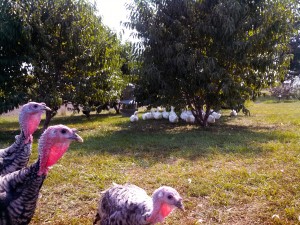Treating Pinkeye in Calves
This is 'Patches', Clarisse's calf. He was born a few weeks ago. He has pinkeye. We thought we'd gotten ahead of it with the rest of the herd, but patches eye was teary and we didn't want to take any chances. At the first sign of irritation we start treatment. The protocol we follow consists of a booster shot of vitamins A, D, & E, cod liver oil (administered orally), cleaning the surrounding area with tea tree oil, and spraying the eye with Vetericyn HydroGel Spray A patch, glued in place over the eye, will fall off in about three weeks. By that time the eye will be completely healed. Through trial and error, working with our veterinarian for a couple years, this is the treatment that's been most effective for us. Dry weather and tall grass seem to exacerbate pink eye. We aren't milking Clarisse during Patches' healing time. We don't want him stressed. When his eye has recovered, Clarisse and Patches will be separated at night. She'll be milked first thing in the morning and reunited with Patches during the day time. The past two summers' weather has been a challenge in more ways than one, but Patches is doing great, now.
Using Tear Mender and old denim Keith makes a patch which he shapes to fit the calves eye. We buy livestock tag adhesive to adhere the material to the calf.
















